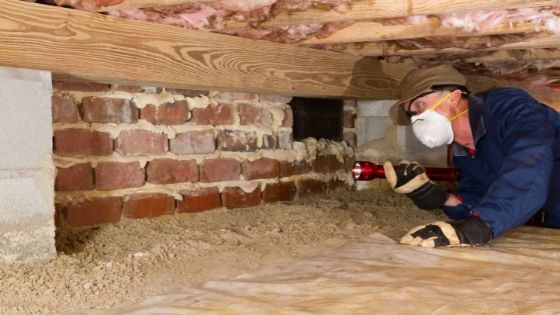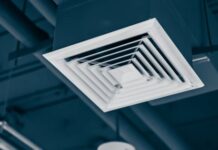Water can easily get into your crawl space, especially if it is not insulated, encapsulated, or waterproofed. And pooling or standing water in the area is never a good thing. It can cause structural damage and even put your health at risk. That said, you should always ensure that the space underneath your home is dry. To make sure that this happens, the best thing you can do is to hire a waterproofing company.
For a more comprehensive solution, it’s important to work with a professional foundation repair contractor. These experts not only address existing foundation issues but also offer specialized services to ensure your crawl space stays dry and protected. From waterproofing systems to structural repairs, they can help maintain the integrity of your home and prevent long-term damage caused by excess moisture.
Ensuring that your crawl space remains dry is crucial to prevent costly foundation damage. By taking preventive measures, you can avoid the harmful effects of excess moisture that can impact your home’s foundation.


But you can also try to get the water out of the area while waiting for the experts to arrive at your place. To help you, here are some tips on how to dry out a crawl space:
• Make Sure to Have All the Necessary Gear and Equipment
Before attempting to dry out a crawl space on your own, make sure that you’re wearing safety gear, such as long sleeves, rubber gloves, pants, and boots. You may also need goggles and ventilators if there’s sewage or mold in the area.
You’ll also need supplies like baking soda, bleach, and a supply bottle. Make sure to prepare the necessary tools as well, such as high-volume fans, a pump, and a structural drying dehumidifier. If you have a wet-dry vacuum, bring it with you too. You can use it as an alternative to sump pumps if you don’t have one.
• Try to Stop Water From Getting into Your Crawl Space
Maintaining crawl space integrity involves several preventive strategies, such as installing vapor barriers, ensuring proper drainage, and sealing any cracks or gaps. Try to stop water from getting into your crawl space by setting up a robust drainage system around your home, directing water away from your foundation.
The benefits of crawl space encapsulation include creating a barrier against moisture, improving indoor air quality, and enhancing energy efficiency. Encapsulation seals out excess moisture, preventing mold growth and structural damage, thereby maintaining a healthier home environment.
You should try to stop water from seeping into your crawl space to avoid flooding and stop further damage. Shut off your main water supply valve if the flow of water in your crawl space is coming from a burst pipe or leak.
However, if the water is coming from outside your property, you might not be able to stop it on your own. It would be best for you to wait for the professionals to arrive at your place. But you can still try to remove as much water as you can to avoid further damage.
Conducting a thorough crawl space inspection will allow you to identify weak points and areas prone to water infiltration, enabling you to implement targeted solutions. Regular inspections by professionals can help you stay proactive in ensuring your crawl space remains dry and well-protected from water-related issues.
• Remove Any Debris and Wet Materials in Your Crawl Space
If you have stored pest traps, wet insulations, or any other things in your crawl space, make sure to get them out of the area first before drying out the underside of your home. Trying to dry your flooring and walls with such debris and wet materials still in place would only keep the area from drying completely.
• Drain the Standing or Pooling Water in Your Crawl Space
Once you’ve removed all the debris and wet materials in your crawl space, you can then start draining the standing or pooling water in the area. As mentioned above, you’ll need a pump or sump pump to do the job faster. In case you don’t have one, you can also use your wet-dry vacuum.
If you don’t have either a pump or a wet-dry vacuum, you can use a bucket and some towels to get rid of the water. It might take a while for you to get the water out using such tools, but it’s better than letting your crawl space be flooded.
• Remove Moisture From Surfaces and Other Materials
Some people think that clearing out standing or pooling water in their crawl space is the end of the job. They’ll just leave the area to dry on its own. But you should also ensure to remove moisture from materials and surfaces. Since you’ve already cleared out the standing or pooling water in the area, it will be easier for you to dry your walls, overhead surfaces, and floors.
You can use your high-volume fans to remove moisture from surfaces and materials underneath your house. As they dry, you can set up a dehumidifier to speed up the process.
Get in Touch With a Waterproofing Company Today!
By following the steps listed above, you might be able to dry out your crawl space on your own. However, if you really want to ensure that water won’t seep underneath your house again, reach out to a waterproofing company right away. They offer solutions such as crawl space insulation and encapsulation.
A waterproofing company may also install dehumidifiers, sump pumps, and vapor barriers in your crawl space to ensure that it’s dry and safe at all times. Contact them now to learn how else they can help you maintain your crawl space.
If you’re concerned about water entering your crawl space, Crawl Space Encapsulation can be an effective solution. By encapsulating your crawl space, you create a protective barrier that helps prevent water intrusion, reducing the risk of damage and mold growth.
























